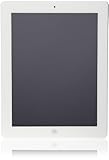2 new posts on Technically Easy |  |
| How to Choose the Right Smartphone Credit Card Payment System Posted: 04 Oct 2012 10:00 AM PDT So, you’ve discovered the fact that smartphone credit card payment systems make it easier to process payments from any location. The next step is to decide which system is right for you. Most smartphones can’t process the magnetic strip on a credit card, so the information still has to be processed through a third party for verification. There are different smartphone credit card payment systems with different features and different price ranges and payment methods. Some charge a fee per transaction and others charge a flat fee per month. Each system that allows you to process credit card transactions via a smartphone has its advantages and disadvantages.
Sizing up the competitionYou will need an app to get started. There are hundreds to choose from, but iPhones have a more diverse selection. Only a few companies link their app to a specific credit card swiping device since the technology is still relatively new. You will need the app that’s related to the card reader you choose in order to get started. The next step is to compare POS software, which would be the companies that provide the actual card swiping devices. Note: Some apps allow you to enter credit card numbers manually without a device, but this can raise security concerns and increases the chances of human error. SquareSquare is the most popular of the card readers currently on the market. The main reason is because of its size. It looks like an over-sized square flash drive at first glance. The device plugs into the audio jack of your smartphone and is accepted by most Androids and iPhones. Square takes 2.75 percent of each card swipe and 3.5 percent plus 15 cents for each non-swipe transaction. The app is free and so is the device, but this is true of most card processing services. The pros include Square’s sleek, easy to use functionality, a simple pricing plan, and the fact that funds go directly into your account and are easily available. However, average discount rates are high, and transactions cannot be voided once initiated Intuit GoPaymentIntuit GoPayment is almost the same as Square, except for two major differences: Intuit GoPayment works with BlackBerry devices, in addition to Apple and Android products. It’s also an easy to use device and the app and card reader are free. Additionally, it gives larger businesses the option of a monthly plan with reduced transaction fees, and there is no contract required. PAYware MobilePAYware Mobile is a system from VeriFone, the leading manufacturer of electronic payment systems. This service is set to go international, a plus for businesses that operate between the United States and Canada on a regular basis. The original app and device integrate with your existing merchant accounts. An updated service was recently launched that supports multiple card processing devices with a bar code scanner and PIN. The device fits around your phone and looks like a traditional card swiper you’d find in a store when it’s attached to your phone. ROAMpayROAMpay is probably the most compatible of the card processing systems. It is compatible with Apple, Android, and BlackBerry. It can also be used with flip phones. Pricing varies, but once you sign up, you get exact pricing details for your specific business requirements. ROAMpay emphasizes security with its product, offering three times the security features of other similar devices. Merchants who use smartphone credit card payment systems should be aware that some customers will insist on traditional payment methods and others will hesitate for safety reasons. These are very real concerns that shouldn’t be ignored. Smartphone credit card payment systems don’t have to replace how you process payments. Instead, it’s just another payment option. Regardless of how much technology advances, customer service is still at the heart of any business transaction. The post How to Choose the Right Smartphone Credit Card Payment System appeared first on Technically Easy. | |
| iPhone & iPad Basic Technology Posted: 04 Oct 2012 05:00 AM PDT Apple is an American based international corporation know for it’s innovative communication based designs that range from various consumer electronics including phones, computer software, personal computers, and portable media devices. The Macintosh line of computers has been Apple’s most prosperous hardware designs, and have been followed up by other innovative products such as the iPhone, the iPad and various other technologies. The iPhone and iPad has played major roles in the advancement of next generation communication with creative technology. iPhone TechnologyThe iPhone runs the Apple exclusive iOS mobile operating system, which was originally named iPhone OS. iPhone’s may serve as a video camera, which was not a primary feature until the the release of the iPhone 3GS. Like other smartphones, it’s widely used as a portable media player, a camera, and provides owners with portable web browsing. Other features include sending texts, receiving video voice mail, with select phone connections ranging from the lower end 2G and 3G data and Wi-Fi connections. The user interface is designed specifically for the phone’s multi-touch screen, and a virtual keyboard. The technology advancements for the includes five generations of updates. Each model was released with five major iOS releases. The early iPhone design was GSM based, and provided many of the design precedents, that include the screen size, button placements, that have been consistent with all future models. With the release of the iPhone 3G, 3G cellular network capabilities were introduced, along with A-GPS location software. The iPhone 3GS introduced including video recording at 480p, a compass, higher resolution camera, and an updated processor. The iPhone’s text can be enlarged to make them more accessible for users with impaired vision, and also accommodates those with impaired hearing with closed captioning and external teletype options. There is also screen reader software, zooming features, and mono audio for those with limited hearing in one ear. Apple continues to release product that makes the phone more accessible. iPad TechnologyThe iPad has paved the way for quality media on the go, allowing users to enjoy media such as movies, books, web content, games, periodicals, music, and helpful applications. The distinctive size and weight fall between the smartphone and modern laptops. The iPad, like other Apple devices, uses the exclusive iOS. The first two iPad generations touchscreens uses a 1,024 by 768 pixel display, a 7.75×5.82 inch liquid crystal display. The screens were designed to be scratch & fingerprint resistant. Apple switched from the 7-inch screen as it felt too small, then opted for the 10 inch screen, intended to present the software to users efficiently. Similar to the iPhone, the iPad was developed to be controlled with the users fingers, requiring users to purchase specific capacitive stylist to use as an extension. Unlike the iPhone’s applications, the iPad’s built-in applications support screen rotation in four orientations, and it doesn’t to have a native orientation, just the relative positions of the home buttons. Overall, Apple’s iPhone and iPad are considered by many, top competitors in their respective areas and they aren’t looking to be replaced by other technology anytime soon.
The post iPhone & iPad Basic Technology appeared first on Technically Easy. |
| You are subscribed to email updates from Technically Easy To stop receiving these emails, you may unsubscribe now. | Email delivery powered by Google |
| Google Inc., 20 West Kinzie, Chicago IL USA 60610 | |





Niciun comentariu:
Trimiteți un comentariu